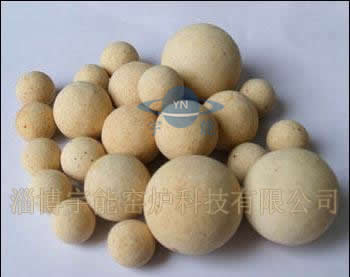Zibo Yunneng Kiln Technology Co. Ltd. Zibo Yunneng Kiln Technology Co. Ltd.
Free delivery samples
high quality assurance
Engineer's door-to-door guidance
lifelong technical support
Contact us+86159669653330086-533-5331887
Zibo Yunneng Kiln Technology Co. Ltd. Zibo Yunneng Kiln Technology Co. Ltd.
Free delivery samples
high quality assurance
Engineer's door-to-door guidance
lifelong technical support
Contact us+86159669653330086-533-5331887
Home -> News -> News -> Castable Technology ->
Castable refractories that rely on superfine powder or sol to produce agglomerating bonds without cement (see refractories).It is different from non-cement refractory castable, which is a kind of refractory castable (also known as chemical binding castable) produced by adding chemical binding agent without cement.Cement-free refractory castable is made of oxide or synthetic compound ultrafine powder or oxide sol which is similar to the main material of tungsten wu castable.
Due to the use of ultrafine powder or sol as binder, low impurity content, so do not reduce the refractoriness of castable and slag erosion resistance, and in use can produce self-binding, help to improve the high temperature structure strength.
Without cement castable refractory aggregate is made and powder, oxide superfine powder or sol, traces of glue solution (or deflocculant) and optimal Zhun delayed sex of hardener.No cement castable mainly depends on oxide ultrafine powder or sol to produce coagulation and combination, therefore, there are certain requirements for ultrafine powder and sol.
Ultrafine powder used refers to particles less than 1 / zm.The oxide ultrafine powder used in cement castable includes SiO2, Al2O3, Cr2zrOz, etc.Among them, SiO powder is mostly used, which is the soot recovered in the smelting process of silicon metal and ferrosilicon alloy. The generation process is as follows:
The average particle size of SiO2 powder recovered in this category is 0.5pm, spherical, with a large surface area and amorphous material, high activity, and therefore has a good bonding strength.
The main sol used are alumina and silica sol.Silica sol is made by removing Na ions from water glass by ion exchange, and it is also made by hydrolysis of ethyl silicate.There are several ways to prepare aluminum sol, the simplest way is to react aluminum with hydrochloric acid or aluminum trichloride.The colloidal size of the sol is O.1 ~ 1 anal m is a colloidal dispersion system, which has a high surface free energy and is a thermodynamic unstable system. Therefore, gel (electrolyte) can be added to produce condensation and give the product certain bonding strength.
Combining mechanism without condensation hardening mechanism of the cement castable for condensation mechanism, is to rely on to join solution of glue (dispersant), first make castable superfine powder or colloidal particles in the glue evenly dispersed or solution, the castable has certain liquidity (or thixotropic), after vibration molding, and delayed by the original join gels result in setting and hardening of castable.
Gel agent is a kind of electrolyte compound, which can dissociate the antiionic substance with opposite electrical charge on the surface of colloidal particle.When the surface adsorption of anti - ions reached %26ldquo.Isoelectric point throughout % 26;When, the gelatinous particles agglomerate and harden through drying, so the hardening process is slow without cement refractory castable.
The physical and chemical properties of cement-free castables with oxide ultra-fine powder or sol are similar to those of low cement and ultra-low cement castables.However, due to the low impurity content of this kind of castable, the low eutectic phase in the material is less, and its refractoriness, erosion resistance and high temperature structural strength are better than low cement and ultra-low cement castable.This kind of material is easy to be sintered to form ceramic bonding, and its strength gradually increases with the increase of heat treatment temperature. The strength after heat treatment at medium temperature and high temperature is higher than that after drying.
The cement-free casting-binding properties of silica sol are similar to that of silica powder, but much better than that of cement cement.The comparison of flexural strength between clay castable bound by silica sol and clay castable bound by calcium aluminate cement is shown in figure.Comparison of flexural strength between silica sol and cement binding castable without cement castable can use oxide superfine powder alone as binding agent or silica sol and aluminum sol as binding agent, and can also use oxide superfine powder and sol as cooperative binding agent.Which binding agent to choose depends on the chemical composition of the aggregate used, such as steel castable alumina ultrafine powder or alumina ultrafine powder plus silica ultrafine powder.Aluminosilicate castable can be used in combination with silica ultrafine powder or alumina ultrafine powder and silica ultrafine powder, or with silica sol as binding agent.Compared with ordinary calcium aluminate cement castable, no cement castable has slower setting and hardening speed, and lower strength after curing at room temperature.Therefore, it is suitable to directly pour into the whole lining in the use site.However, the temperature is allowed to be higher than ordinary castable and low cement or ultra-low cement castable of the same material.No cement castable can be used as lining of shengsteel drum, induction furnace, etc.
Relevant Product Display
 Aluminosilicate ceramic fiber blanket, shake silk blanket
Aluminosilicate ceramic fiber blanket, shake silk blanket
 SL series light insulation castable
SL series light insulation castable
 Blast furnace body castable
Blast furnace body castable
 Refractory ball
Refractory ball
Relevant information
Hotline